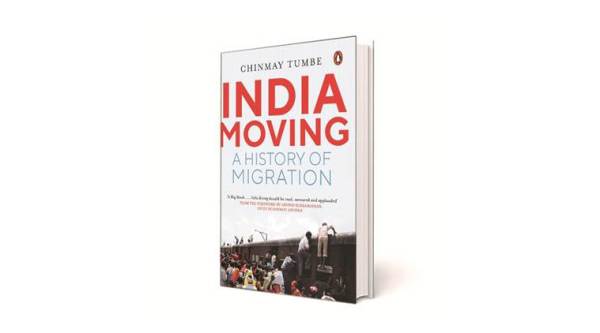
As small towns turn into cities and urban centres become megapolises, the rural-to-urban move is the largest form of migration India is witnessing. While Chinmay Tumbe does not dismiss that the numbers are staggering, but the author of the book India Moving: A History of Migration (Penguin; 2018), believes we tend to overlook the obvious. “The biggest form of migration in India is marriage,” he asserts. He was in Mumbai recently as part of the Migration Museum, a one-day event by Godrej India Culture Lab.
An assistant professor in Economics at the Indian Institute of Management Ahmedabad, Tumbe’s family migrated from Udupi to Mumbai, where he grew up. The topic has therefore been an area of interest.

Women who migrate alone do so mostly for education, says Tumbe. It’s rare to move for work although it is common in some pockets like Chhattisgarh, where the trend is new. “Involuntary migration for trafficking has been happening but Chhattisgarh is one state where women move to cities for work. And this is possibly because tribals don’t look down upon women migrating for work,” he says.
A part of the reason that drives women’s migration from Chhattisgarh is the network they have established in Mumbai and Delhi, where it is easier for them to find work as domestic helps. “Or they move en masse via contractors in a sector where they can find a job, such as teaching, domestic work and knitting in the garments industry. Bangalore is one such centre and the other is Tirupur in Tamil Nadu,” he says, citing Udupi as a contrast region, which only see its menfolk migrating.
Many such women, who move either for marriage or for work, reside in slums, which compels one to ask if this life is better than what they had back in their village. Tumbe believes it is. “You will see that a Bihari man who moved to the city with his family will eventually fare better than his village compatriots. So, slums are often an outcome of choice because people need cheap housing space. And this can be established by Mumbai’s example where 55 per cent of the city’s population resides in slums, only 30 per cent are below poverty line.”
There can be several reasons why men choose to move to a city alone. One of them is women’s safety as many accommodations in big cities are male dominated. Also, men often leave behind their wives to take care of their parents and the land.
But there are exceptions to these migration trends. His research in Surat showed Tumbe that tribals from north Maharashtra migrated mostly with their family whereas the ones from Bihar came to the city solo. “It was unthinkable for the Maharashtrian to move without his family, whereas the Bihari male migrant worker found the idea of bringing them along absurd. So it was mostly based on the patriarchal norms they had internalised.”
However, Kerala with high female literacy and gender ratio presents an interesting counter to this example. Tumbe reveals that although Malayali women migrate across the world to work as nurses, their numbers do not exceed men, who migrate to the Gulf.